CCB and Partners Supporting Whimbrels Through Coordinated Conservation

Heron Heyday
October 9, 2024
CCB Surveys Reveal Wayne’s Warbler Strongholds in Virginia
October 9, 2024Two whimbrels, including an adult (foreground) that exhibits worn body plumage, especially along the scapular region, and a juvenile (background) with fresher plumage. CCB collaborated with eBird and used photographs like these to better understand differences in migration patterns between adults and juveniles at migratory stopover sites in the eastern United States. Photo credit: Macaulay Library (ML116488021)
Among the many bird species that CCB has researched in the name of conservation is the whimbrel, a large, brown shorebird known for its distinctively downcurved bill. This species is experiencing population declines throughout its range, making it a focal point for conservation efforts across North and South America.

The whimbrel’s life cycle spans vast distances, from the northern coast of Alaska and Canada and south to Brazil, necessitating a collaborative approach to conservation. CCB partners with local organizations like The Nature Conservancy on Virginia’s Eastern Shore, as well as those in Canada and South America. These partnerships have been instrumental in mapping population-specific migration pathways, mitigating threats such as shorebird hunting, and identifying critical landscape features like night roosts.
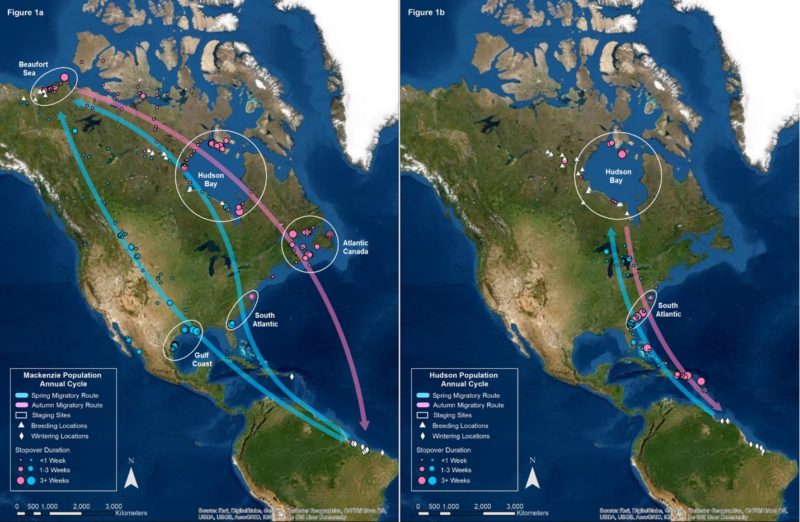
While past research has almost exclusively concentrated on adult whimbrels, recent efforts have shifted toward understanding the juvenile life stage, which remains relatively unexplored. In the past couple years CCB staff have reviewed publicly available information, like that found on eBird, and traveled throughout the Atlantic coast to discover autumn stopover sites that might serve as hubs for field studies. These efforts have primarily honed in on two areas that seem to support the largest numbers of juveniles in the eastern United States, the Cape Cod region of Massachusetts and the eastern shore of Virginia.
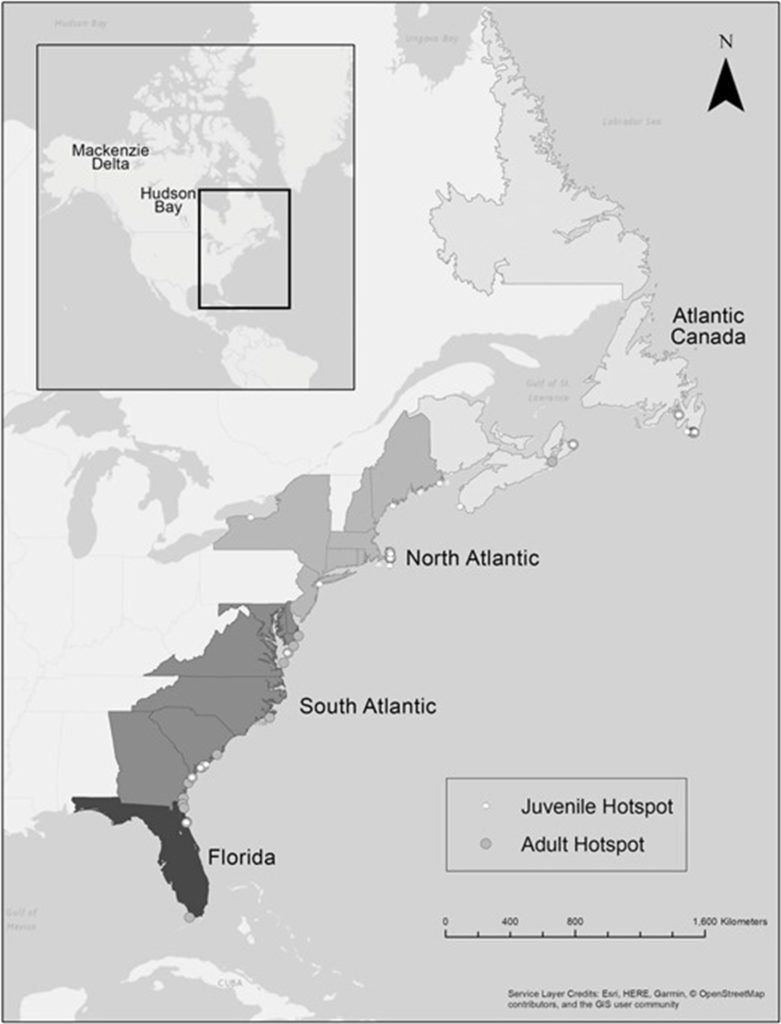
To gain insights into juvenile migration pathways and potential threats, CCB staff recently traveled to Massachusetts, where Manomet Conservation Sciences is targeting juvenile whimbrels for satellite tracking. Manomet’s 2024 goal was to deploy four transmitters on juvenile whimbrel. After close to two weeks of trapping the fourth bird was tagged shortly before the birds departed on their trans-Atlantic flight toward their wintering grounds. It is not yet clear whether the juveniles are heading to Brazil, where they would share winter foraging areas with adults, or if they winter at disjunct locations in the Caribbean or South America.
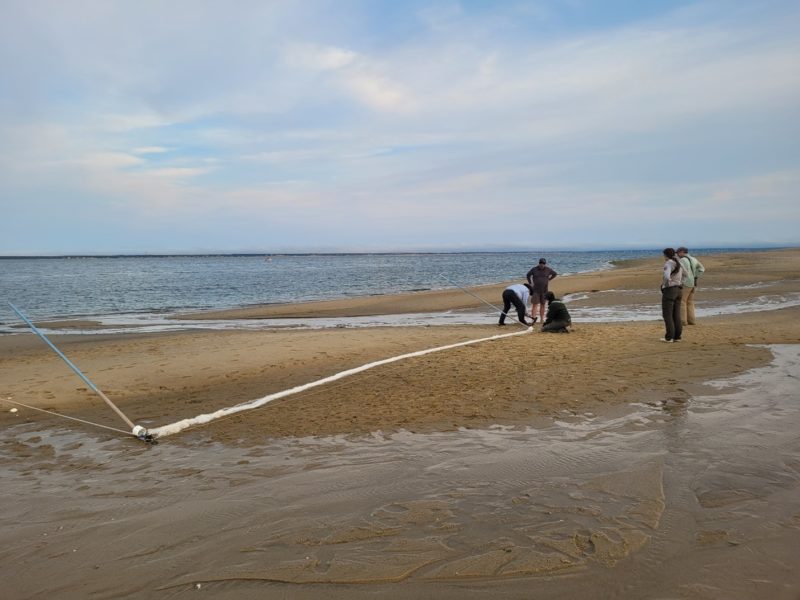
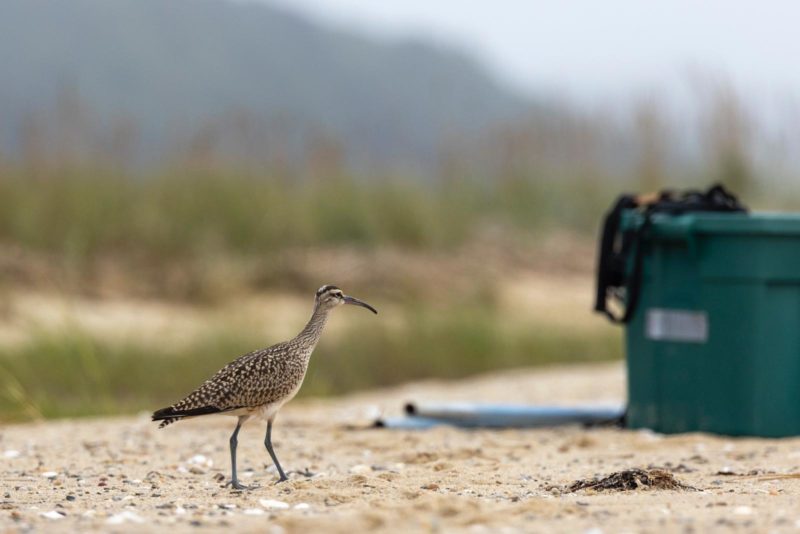
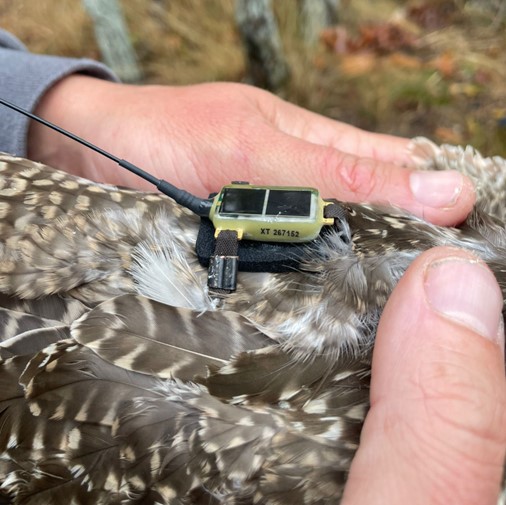
Virginia’s eastern Shore is the only other location south of Massachusetts where relatively large numbers of juvenile whimbrels are regularly observed. CCB plans to capture and equip more juveniles with transmitters on Virginia’s eastern shore in the near future to further understand potential threats that the juvenile age class faces along migration and during winter.



